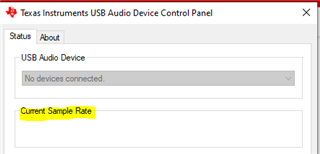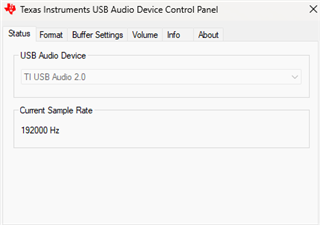Other Parts Discussed in Thread: TLV320ADC5140
Tool/software:
Dear all,
I am in the process of trying to configure the TLV320ADC5140 on the ADC5140EVM-PDK.
I want to sample 4 channels @ 192kHz with 16-bit word length (4 analog MEMS microphones).
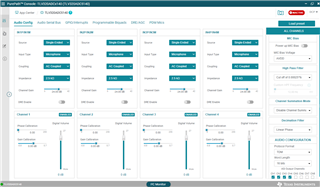
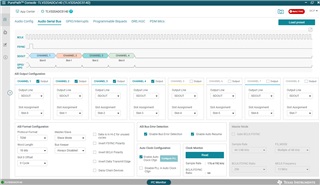
In the windows driver, I choose "8 channel, 16 bit, 192000 Hz".
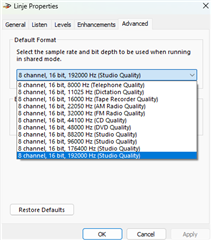
When I press read in the Clock Monitor, the BCLK/FSYNC ratio is automatically configured to 64 which should allow for 4 channels of 16 bit word length.
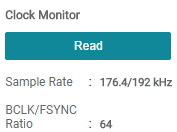
I am using Reaper (DAW) to analyze the input from each channel and I can only see output on 2 channels which is mic 1 and 3.
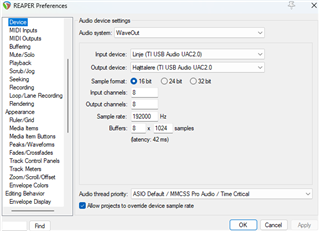
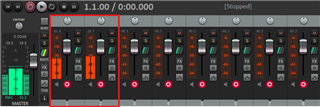
Furthermore, I've tried to debug the signals BCLK, FSYNC and SDOUT where I've marked each distinct audio stream (red, blue, green, yellow):

I've checked that these are in fact the audio streams for channel 1,2,3 and 4 by disabling them individually and seeing that the audio stream disappears for that slot.
The blue and yellow audio stream (mic 2 and 4 mapped to slot 1 and 3) gets ignored completely and I can only see the audio from mic 1 and 3 which are mapped to slot 0 and 2.
Furthermore, the FSYNC signal is described as being a pulse, but here it has a 50% duty cycle which is a discrepancy according to the TDM format described in this video by TI: https://www.ti.com/video/6311104210112
I've noticed that the 50% duty cycle for FSYNC only appears at frequencies above 48kHz for some reason and as a pulse @ 48 kHz and below
which is also where FSYNC/BCLK ratio changes from 256 (<= 48kHz) to 64 (> 48kHz).
I have tried to do the same setup (4 channels @ 48 kHz, 16 bit word) where FSYNC/BCLK ratio is 256 and I can get 4 distinct audio streams to appear in my DAW but only if I map the channels 1,2,3 and 4 to slot 0,2,4,6.
The only way so far that I've succeeded with a somewhat logical result is 4 channels @ 48 kHz, 32 bit word mapping channels 1,2,3 and 4 to slot 0,1,2,3 which appears as 4 audio streams in my DAW as expected .
There seems to be some kind of correlation between choosing a 16 bit word length and the resulting audio stream somehow "skipping" each 2nd slot and I am not able to choose 32 bit word for 4 channels @ 192 kHz which I imagine would fix my problem.
I've been trying to fix this issue for a couple of days now and I can't seem to figure out if I'm missing something or if I'm encountering some kind of hardware limitation?
I've included my ADC register config here: ADC_REGISTERS.csv
Thanks in advance
Best regards
Jannich




